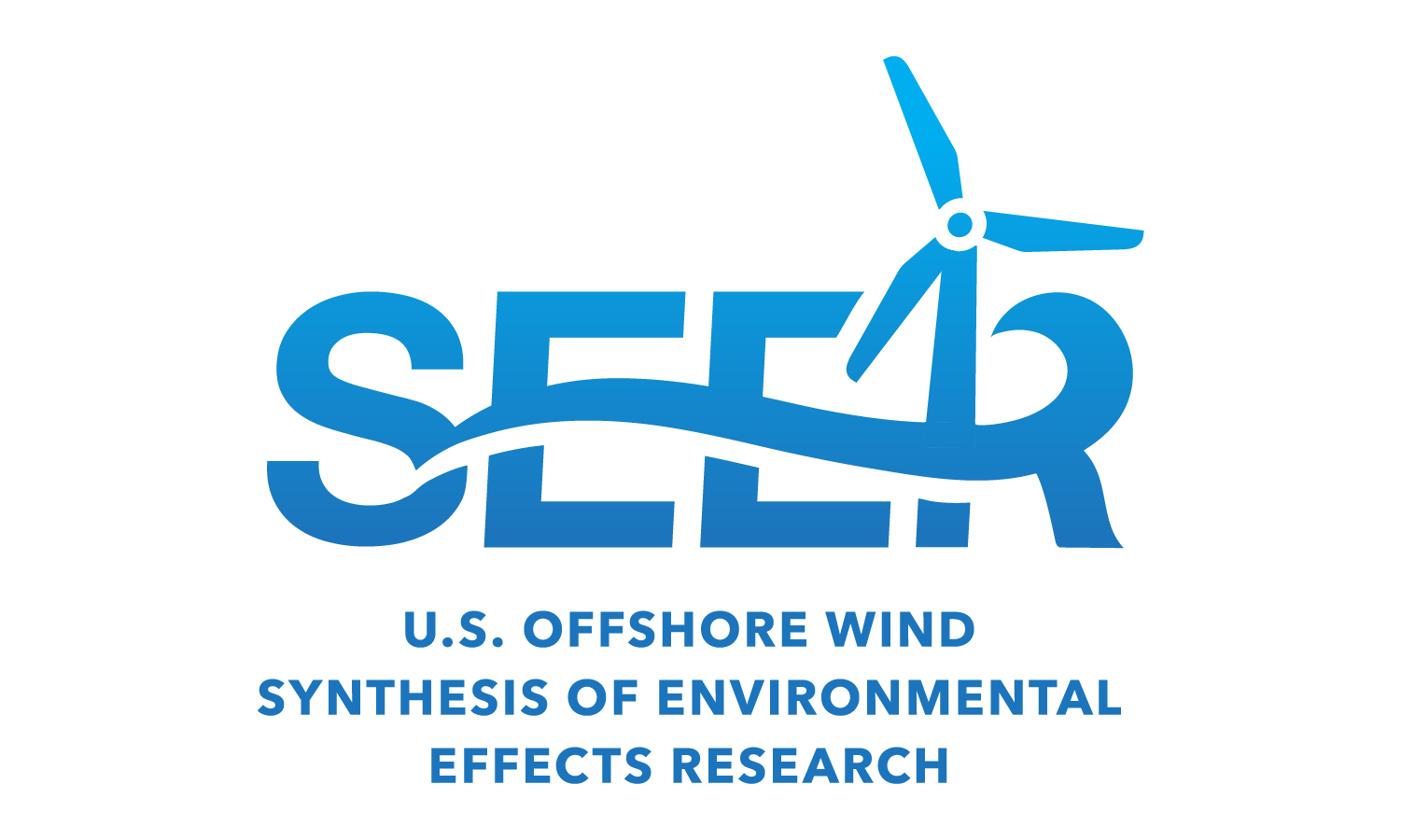
The U.S. Offshore Wind Synthesis of Environmental Effects Research (SEER) effort compiled a database of research recommendations, from over 40 existing resources, that are relevant to the environmental effects of offshore wind energy development on the U.S. Pacific Coast (California, Oregon, and Washington). The SEER team then synthesized the over 500 individual research recommendations into roughly 50 broad overarching topics to provide an overview of what is included in the database.
The database includes input from the SEER Pacific Research Recommendations Workshop held during May 3-5, 2022. The stakeholder workshop focused on preconstruction (baseline) research needs for potential floating offshore wind energy development on the U.S. Pacific Coast. The workshop covered three marine life breakout groups on subsequent days to discuss recommendations related to: 1) marine mammals and sea turtles, 2) fish and invertebrates, and 3) birds and bats. The final Workshop Report includes a summary of discussions and key takeaways from each breakout group.
The online tool below presents the synthesized research recommendations and provides links to relevant citations. Results can be refined by selecting from the drop-down menus or entering a search term. Synthesized research recommendations are ordered alphabetically. The order does not signify the importance or priority of each recommendation.
Download the complete database as a spreadsheet here.
Download the synthesized recommendations below as a spreadsheet here.
A similar database for the U.S. Atlantic Coast is available here.
| Research Recommendation | Stressor/Topic | Receptor | Development Phase | Citations |
|---|---|---|---|---|
| Using Existing Fisheries and Landings Data
Use existing data to develop spatially explicit estimates of fish abundance and presence in potential offshore wind energy areas through the use of logbook data, catch records, and AIS/VMS data....Read more Use existing data to develop spatially explicit estimates of fish abundance and presence in potential offshore wind energy areas through the use of logbook data, catch records, and AIS/VMS data. Recognizing that some fishery landings data in confidential, develop statistical or methodological approaches to improve accuracy are reduce misleading findings around fisheries data. Read less |
Baseline | Fishes, Invertebrates | Pre-construction | Johnson et al. 2022, California Energy Commission 2021, Flick et al. 2021, Aylesworth et al. 2019 |
| Vessel Strike Risk Analysis
Support research and analysis on impacts of vessel strikes to marine life (e.g., marine mammals, sea turtles) associated with offshore wind development activities....Read more Support research and analysis on impacts of vessel strikes to marine life (e.g., marine mammals, sea turtles) associated with offshore wind development activities. Evaluate threat of mortality/injury from vessel strikes associated with offshore wind farm activities and identify spatiotemporal patterns of risk to inform potential mitigation approaches. Read less |
Vessel collision | Fishes, Marine mammals, Sea turtles | Pre-construction, Construction, Operations & Maintenance, Decommissioning | Maxwell et al. 2022, Responsible Offshore Development Alliance (RODA) 2021, Gitschlag et al. 2021, Southall et al. 2021, Crowfoot et al. 2020, NOAA NMFS (2022) |
| Water Quality Effects
Understand potential degradation of water quality, including chemicals, petroleum products, harmful algal blooms, nutrients, oxygen, temperature, light conditions, acidification, etc. |
Habitat Change | Bats, Benthos, Birds, Invertebrates, Fishes, Marine mammals, Sea turtles | Pre-construction, Construction, Operations & Maintenance, Decommissioning | Responsible Offshore Development Alliance (RODA) 2021, Carpenter et al. 2021, Bates et al. 2017, Boehlert et al. 2008, Douglas et al. (2022), NOAA NMFS (2022) |
| Whale Reaction to Ships on Diel Cycle
Understand how whales might react differently to ships in the day versus night, and whether there is some potential for whales to be less reactive to ships at night in addition to their being in a more vulnerable portion of the water column closer to the surface. |
Vessel collision | Marine mammals | Pre-construction, Construction | Calambokidis et al. 2019 |
